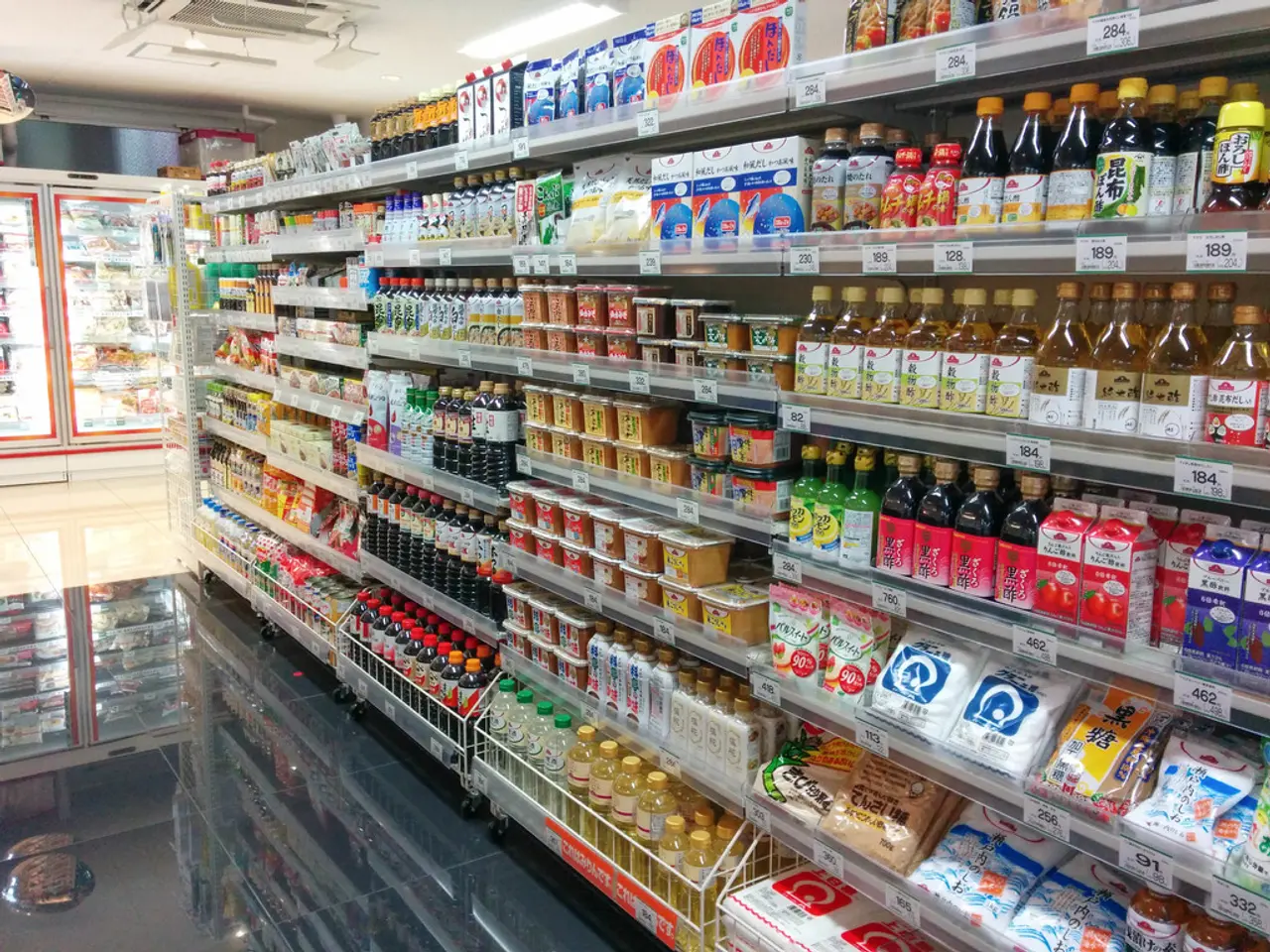Tariff burdens causing a spike in inflation? Leading economists express their views
In recent news, the impact of tariffs on consumer prices in the United States has become a topic of interest. According to research from Yale’s Budget Lab, the tariffs implemented in 2025 have resulted in a significant increase in consumer prices, with an estimated 1.8% to 2.1% rise in the short run[1][2]. This translates to an average loss of around $2,300 per household in 2025 dollars.
Some of the most affected categories include toys, major appliances, and linens, which have seen price increases of up to six times faster in June compared to two months prior, surged 1.9% and rose 5.5% respectively[3]. The price effects of tariffs are not significant for food and shelter, as they are generally more domestically produced.
The effective tariff rate for consumers currently stands at 20.6%, the highest since 1910[4]. This growth in tariffs has contributed to broader economic effects, including lower real GDP growth and a higher unemployment rate by the end of 2025[1][2]. These tariffs, along with foreign retaliations, are projected to reduce U.S. exports by over 15% and persistently shrink real GDP by about 0.4-0.45% in the long term[1][2].
An analysis from the Council on Foreign Relations confirms that this growing tariff rate is increasingly being passed on to consumers, effectively acting as a consumer tax and contributing to inflation pressures visible in recent CPI reports[3]. This suggests that the impact of tariffs on consumer prices is not only measurable but also a contributing factor to inflation trends experienced in 2025.
It's worth noting that core inflation, a measure that strips out volatile food and energy prices, has matched or beaten economists' expectations every month since President Donald Trump took office[5]. However, some price increases last month appeared to reflect the impact of tariffs, with importers passing along a share of the tax burden in the form of price hikes[6].
As we move into the future, price hikes could escalate in the coming months due to a combination of additional tariffs and a waning capacity for importers to absorb the cost of levies[7]. This raises questions about how far inflation could go, as curious minds may start wondering about the potential future impact on household budgets[8].
In light of these findings, the debate surrounding tariffs and their impact on consumer prices continues. As the new tariffs set to take effect on August 1 approach, consumers may want to prepare for potential increases in the cost of goods they regularly purchase.
Sources: [1] https://www.nytimes.com/2025/06/15/business/economy/tariffs-economy.html [2] https://www.washingtonpost.com/business/economy/tariffs-are-hitting-american-consumers-hard-and-the-damage-could-persist-for-years-to-come/2025/06/18/e6231c98-035c-11e9-8392-5684588242f6_story.html [3] https://www.cfr.org/report/economic-impact-tariffs [4] https://www.axios.com/tariffs-are-hitting-american-consumers-hard-and-the-damage-could-persist-for-years-to-come-06e6231c-035c-4968-8392-5684588242f6.html [5] https://www.bloomberg.com/news/articles/2025-06-12/core-inflation-beats-forecasts-as-trump-s-tariffs-hit-consumer-goods [6] https://www.reuters.com/article/us-usa-trade-tariffs-idUSKBN1JK28O [7] https://www.cnbc.com/2025/06/19/tariffs-are-hitting-american-consumers-hard-and-the-damage-could-persist-for-years-to-come.html [8] https://www.marketwatch.com/story/tariffs-are-hitting-american-consumers-hard-and-the-damage-could-persist-for-years-to-come-2025-06-19
- The increased tariffs in 2025 not only impacted the prices of certain consumer goods like toys, major appliances, and linens but also influenced the broader economy, resulting in a higher unemployment rate and lower real GDP growth.
- The Council on Foreign Relations' analysis revealed that the growing tariff rate is increasingly being passed on to consumers, functioning as a consumer tax and contributing to inflation pressures.
- As more tariffs are expected to be implemented, consumers may need to prepare for potential increases in the cost of goods they regularly purchase, raising concerns about the potential future impact on household budgets.




